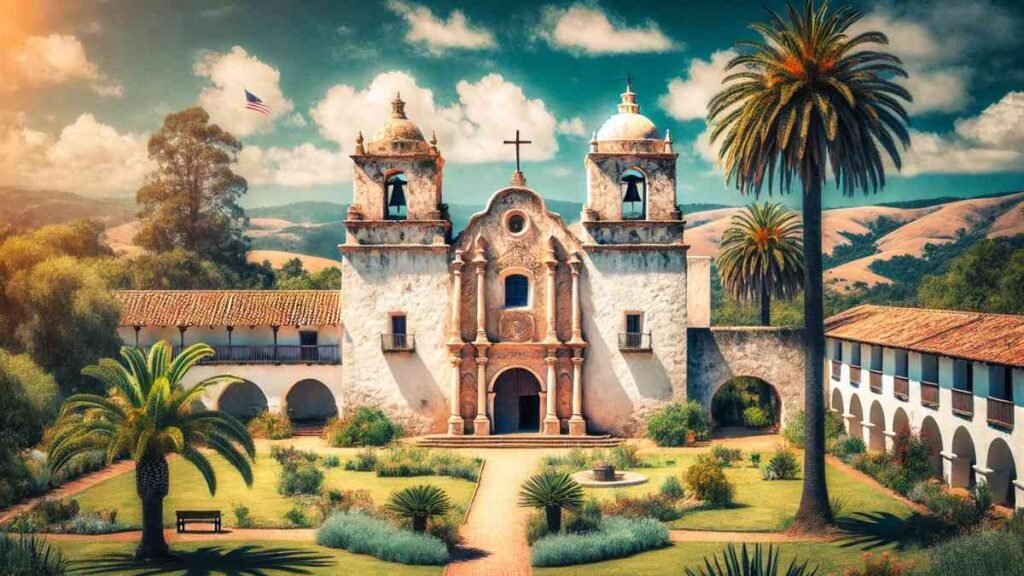Mission San Francisco De Asis, also known as Mission Dolores, stands as one of the most historically significant landmarks in California. Established in 1776, it has witnessed centuries of cultural, social, and religious transformation. As the oldest building in San Francisco, it offers an authentic glimpse into the era of Spanish colonization and its lasting influence on California’s architecture, history, and spirituality.
The Origins and History of Mission San Francisco De Asis
The establishment of Mission San Francisco De Asis was part of the Spanish mission system, a network of 21 missions created to spread Christianity among Indigenous people in California. Named after Saint Francis of Assisi, the mission became a vital religious and cultural hub. Its original purpose was to convert the Native American population to Catholicism and integrate them into European agricultural practices. Over time, the mission played a significant role in shaping San Francisco’s development.
Architectural Significance
The architecture of Mission San Francisco De Asis is a prime example of Spanish colonial design. The building’s white adobe walls, arched doorways, and rustic wooden beams reflect the simplicity and functionality of early mission architecture. Its centerpiece, the bell tower, continues to stand tall, representing the mission’s enduring presence. The interior of the mission is equally captivating, with hand-painted murals that depict religious scenes, showcasing the artistic heritage of the era.
Mission Role in Native American Life
The mission system had a profound impact on Native American communities. The Ohlone people, who originally inhabited the area, were introduced to Christianity and European agricultural techniques. While the mission provided food, shelter, and religious instruction, it also disrupted the traditional way of life for the Indigenous population. The mission became a center of both cultural exchange and conflict, as the Ohlone were expected to adapt to new customs.
The Mission’Resilience Over Time
Throughout the centuries, Mission San Francisco De Asis has survived multiple challenges, including earthquakes, changing political powers, and urban development. Despite these obstacles, the mission remains a vibrant part of San Francisco’s history. Its restoration efforts have ensured that it continues to stand as a symbol of cultural preservation. Visitors today can explore the mission’s gardens, chapel, and museum, gaining insights into its historical importance.
Religious and Cultural Impact
Mission San Francisco De Asis remains an active place of worship, blending centuries-old traditions with modern-day practices. Its role as a religious institution extends beyond its walls, influencing the surrounding community. Special events, religious services, and historical reenactments are regularly held, allowing locals and tourists to connect with the mission’s rich heritage. Additionally, the mission has become a key educational site, offering guided tours that delve into its historical and cultural significance.
Modern-Day Significance
In the modern era, Mission San Francisco De Asis serves as a reminder of the complex history of California. It is a place where history, religion, and culture intersect, providing an opportunity for reflection on the legacy of Spanish colonization. The mission is now a popular tourist destination, attracting visitors from around the world who seek to understand its historical relevance.
Preservation Efforts
Efforts to preserve Mission San Francisco De Asis are ongoing, with the goal of maintaining its historical integrity while ensuring it remains accessible to future generations. Restoration projects focus on preserving the mission’s original architecture, including the delicate murals inside the chapel. These efforts are critical in safeguarding the mission’s status as a National Historic Landmark.
Conclusion
Mission San Francisco De Asis is more than just a historical site; it is a living testament to the cultural and spiritual journey of California’s early inhabitants. Its significance extends far beyond its walls, offering a deep connection to the past while continuing to serve the community. The mission’s ability to adapt and thrive in a modern world underscores its importance as a symbol of resilience, heritage, and faith.
For More Visit, MirrorMagazine.co.uk


